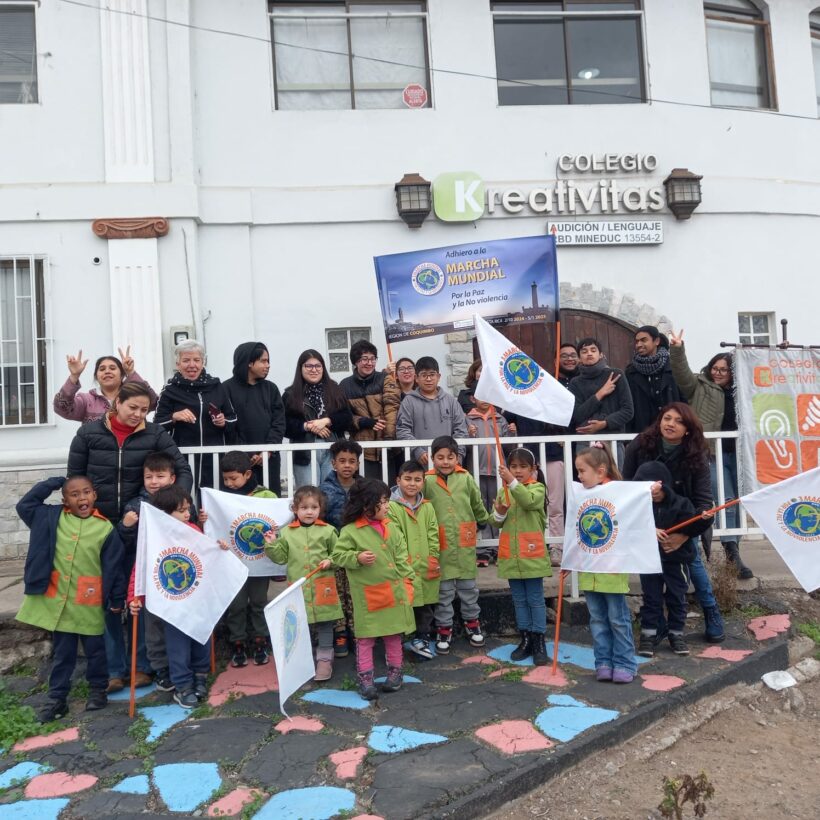The Kreativitas School is a beacon of hope and empowerment led by its founders, Ana María Cárdenas Olivares and Lorena Astorga Alvarado.
It has teachers of special education, basic education, nursery education, psychologists, speech therapists, and LSCH (Chilean Sign Language) facilitators.
Located in La Serena, Coquimbo Region, Chile, at 916 El Santo Street, it is a free, privately subsidized institution that provides comprehensive care for 35 students between the ages of 3 and 26, preschool/school/young children with hearing impairment and specific speech disorders. It advises families and institutions in the field of hearing and speech impairment and establishes support networks with clinical, technical, and educational organizations.
Its objectives are based on the integration of children and young people with hearing loss or deafness into the social and working world. For preschool children aged between 3 and 5 who have a speech disorder, the aim is to integrate them into school in the short term.
In its institutional trajectory, it stands out for its management in projects of promotion of deaf culture and awareness, seminars, a national championship of athletics, a project of graphic production and merchandising, and civic empowerment for mothers of the school Creativitas.
Deaf people, due to their focus on visual communication, often have distinctive emotional characteristics:
Sensitivity to non-verbal signals:
Because they rely on visual cues such as sign language, they are highly sensitive to the facial expressions and body language of those around them.
They can pick up on emotions and moods.
Resilience and adaptability:
Deafness can present challenges, but they develop great resilience and adaptability.
They learn to cope with obstacles and find creative solutions.
Community and solidarity:
The deaf community is an important pillar in their lives.
Solidarity among Deaf people is strong and they support each other in their shared experiences.
Creativity and artistic expression:
By not relying so much on spoken language, they can channel their creativity through other forms of expression, such as visual arts or dance.
Potential social isolation:
The communication barrier can lead to social isolation.
Some deafblind people may feel excluded or misunderstood.
In summary, the emotional characteristics of deafblind people are varied and unique. Each individual has their own experiences and ways of coping with the world. They teach us valuable lessons that can enrich our lives.
What we can learn from them:
Observe how they communicate through sign language, which reminds us of the importance of non-verbal communication.
In short, by learning from them, we cultivate greater understanding, empathy, and appreciation for human diversity.
Historically, there has been a misconception that deaf people are referred to as “deaf and dumb”. However, it is important to clarify that not all deaf people are mute. Here is the difference:
Deaf person:
A deaf person has a total or partial loss of hearing.
He or she may communicate using sign language or other visual forms.
Even if they do not use speech, they have no problems with their speech apparatus.
Mute person:
A mute person cannot speak because of a physical disability or an injury to the vocal cords.
Muteness is not necessarily related to deafness.
Some deaf people can produce sounds, but their pronunciation may be different due to their lack of hearing.
In summary, deafness and dumbness are two different conditions and there is no physiological connection between them. It is important to avoid the term “deaf-mute” and to recognize that deaf people have voices and communicate in a variety of ways.
Suggestions
There are many ways to communicate with a deaf person. The most popular methods are lip-reading and sign language, but you can also consider other alternatives:
Communicate by lip-reading:
Stay in their field of vision and keep your eyes at the same level as theirs.
Speak in a normal voice and tone, avoiding whispering or shouting.
Maintain eye contact and use gestures and visual cues to illustrate your words.
Use sign language:
Learning some basic signs can make communication easier.
If you do not know sign language, you can learn common phrases or the manual alphabet.
Follow general etiquette:
Be respectful and attentive. Avoid covering your mouth or looking around when speaking. Always make eye contact and speak naturally. Remember that each deaf person may have individual preferences, so it is important to ask yourself how you prefer to communicate. The most important thing is to be empathetic and willing to learn.
For one week the school developed activities related to non-violence. Through films and various activities, the children expressed their best wishes for peace and non-violence. The children, coming from different countries, were very extroverted and explicit in giving examples and participating in exchanges.
Their participation in the Third World March demonstrates their commitment to peace, non-violence, and inclusion.
Let’s keep building a better world together!
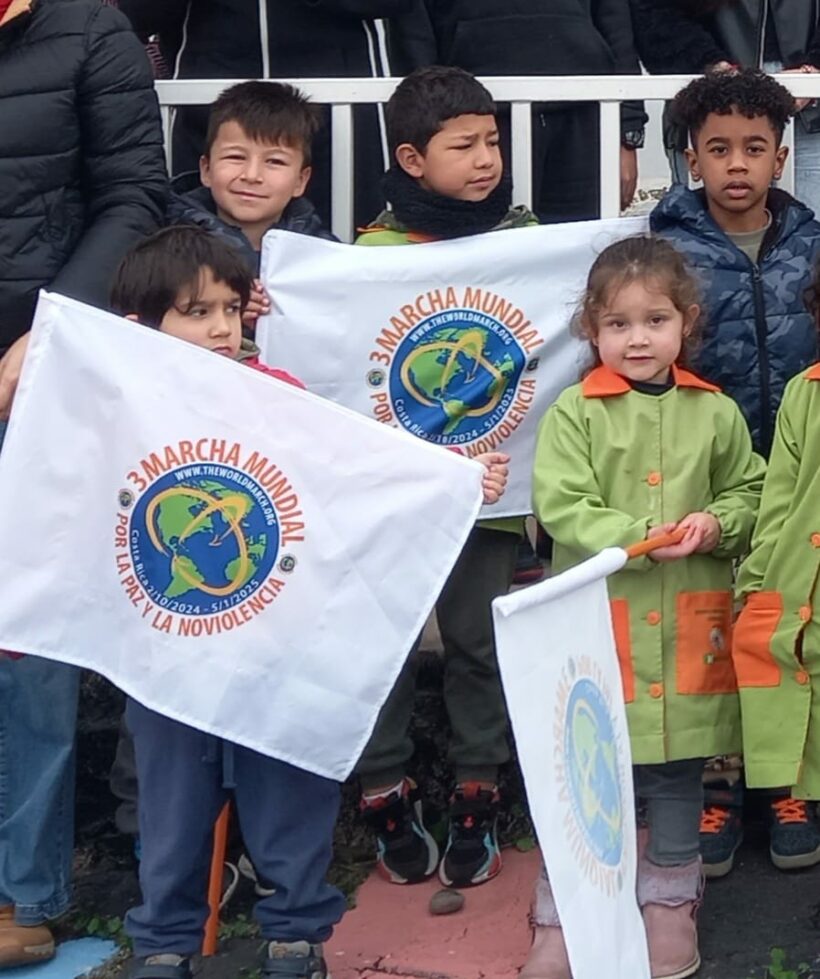
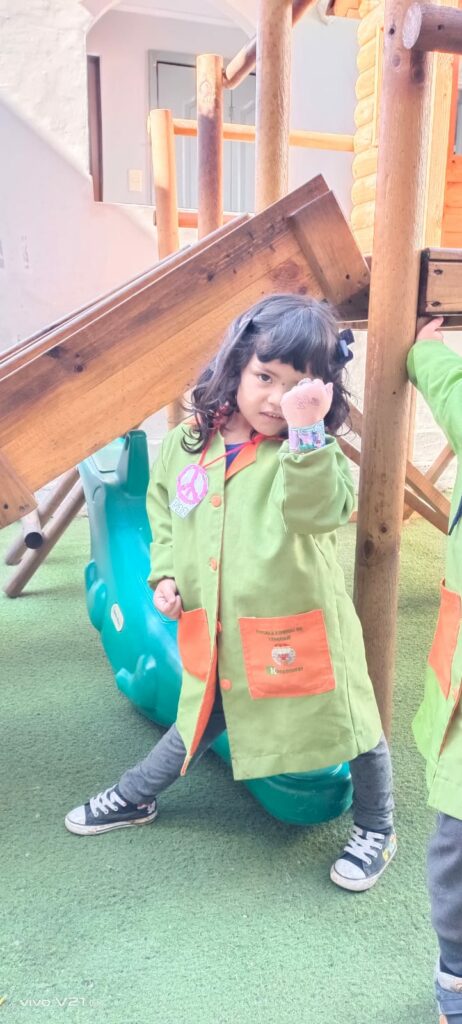
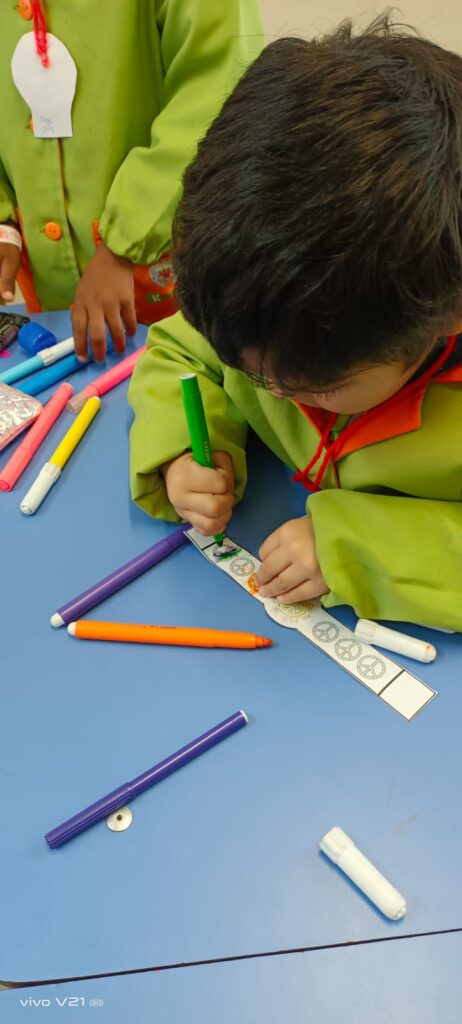
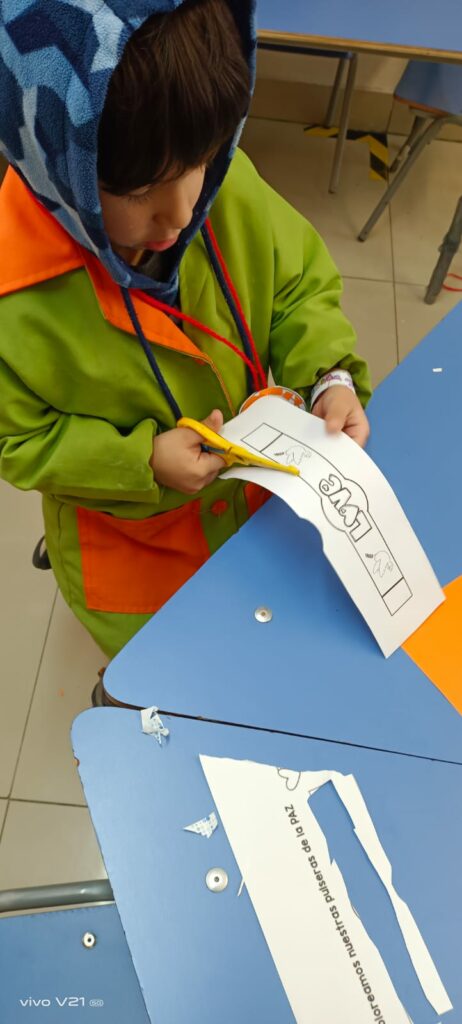
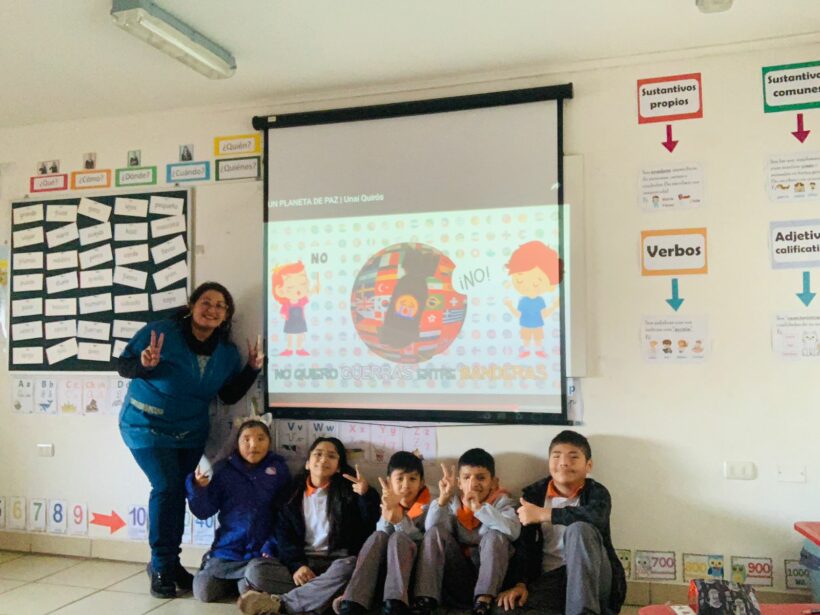
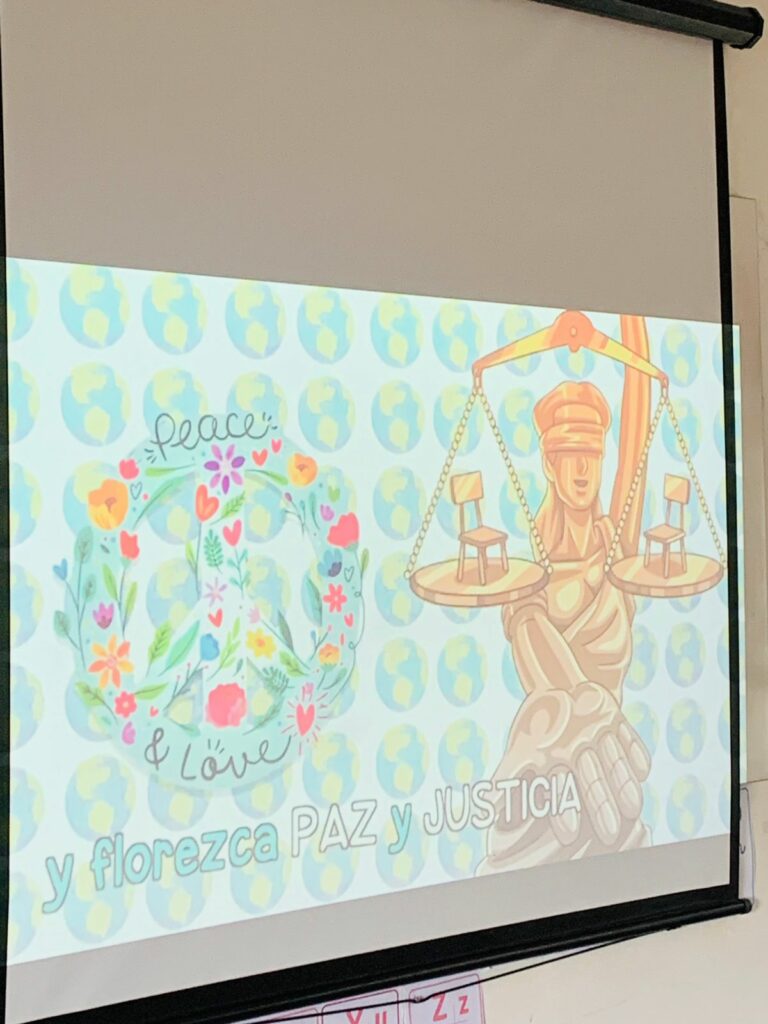
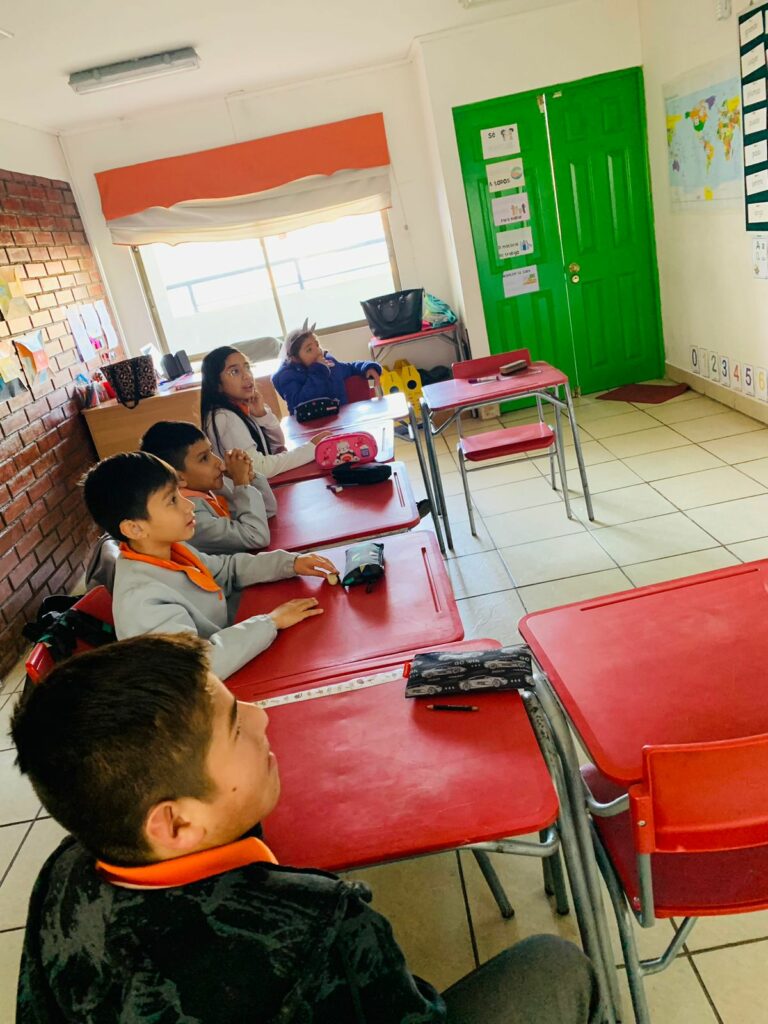
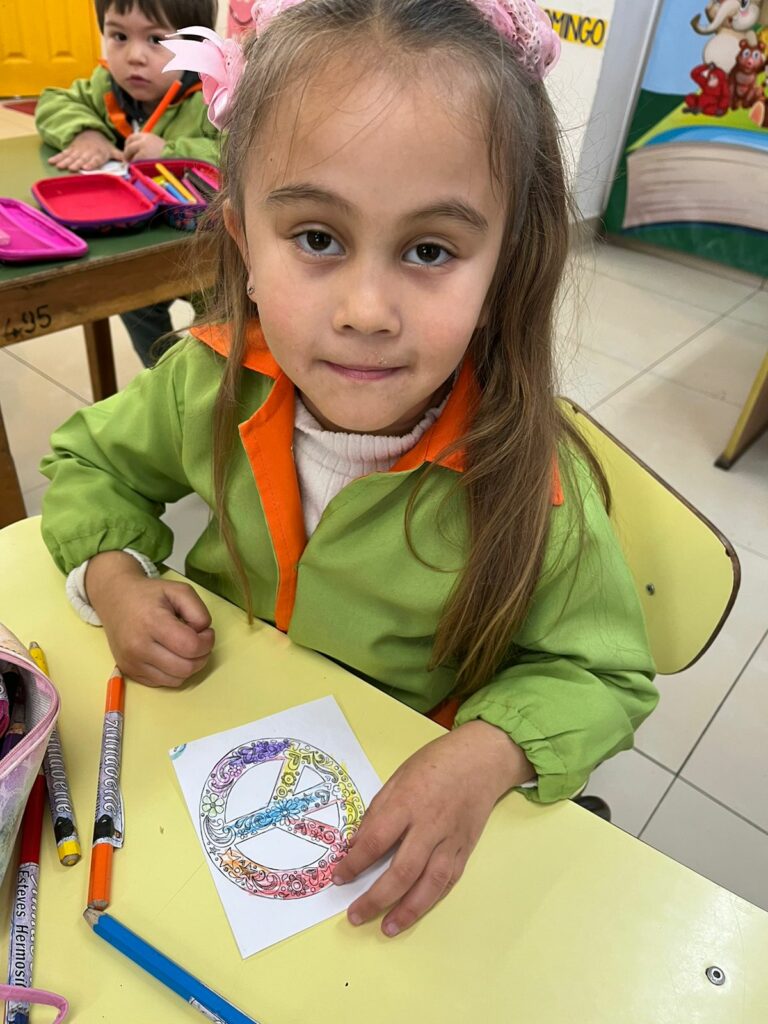
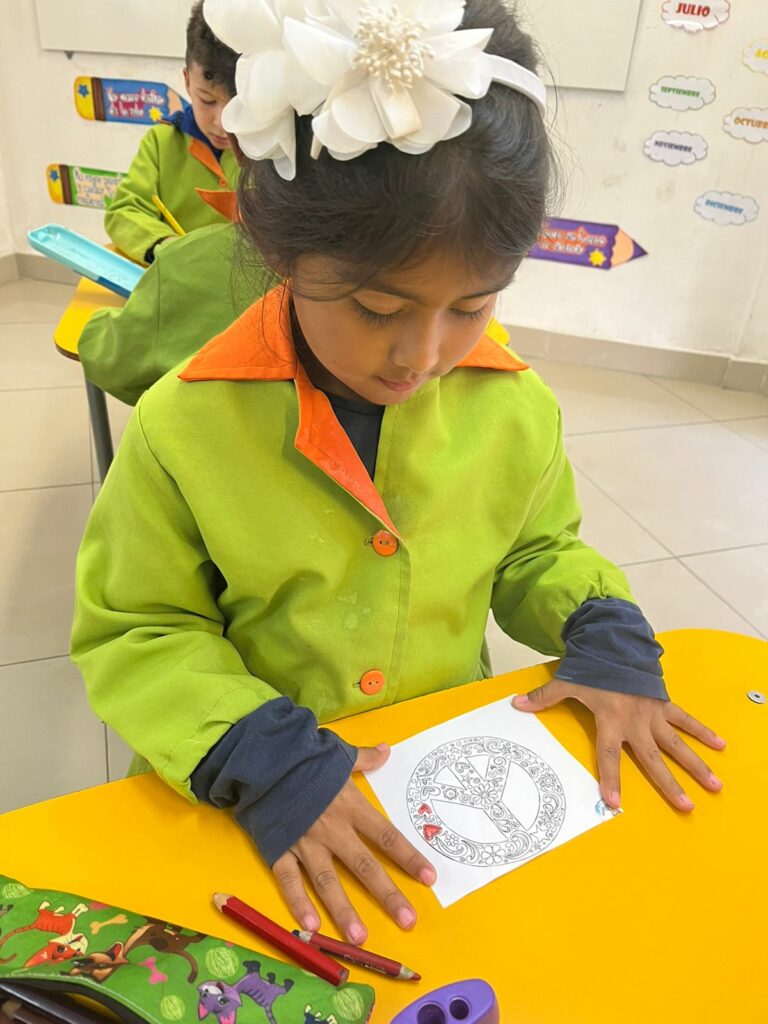
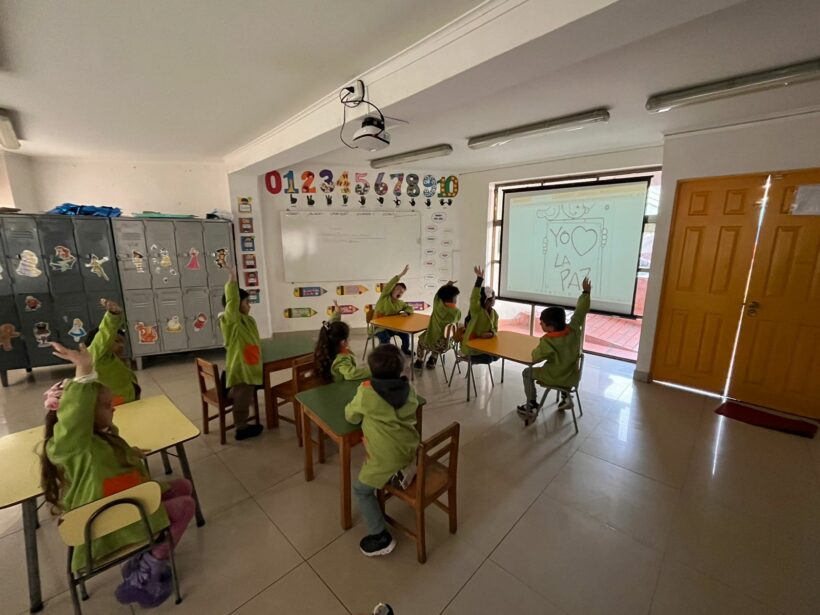
Watch the videos on the links below:
Kreativitas School joins the 3rd World March for Peace and Nonviolence – YouTube
Interview with the founders Ana María Cárdenas Olivares and Lorena Astorga Alvarado – YouTube
Gladys Mendoza Jaque y Ricardo de la Fuente


